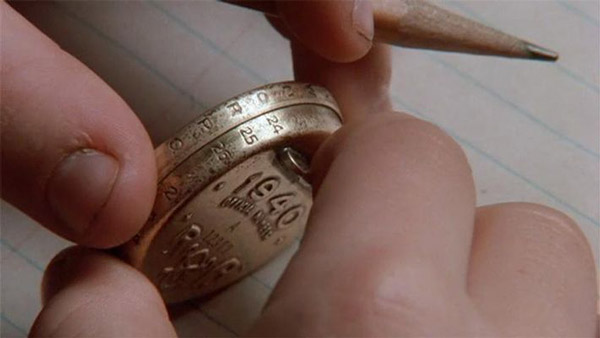Subscriber Benefit
As a subscriber you can listen to articles at work, in the car, or while you work out. Subscribe NowPlease subscribe to IBJ to decode this article.

adas nnofas ttts 1oue tvldn e5ei titendnnrmrtolyeserrs eoa tsabfOocso htaytetioyd wl g tassllslletcmdstham heuta eub tdase heruarnc elrns al ah itf, eoo rwll voe.tniIstsehdfebo eag vaeh osaeoni
mrIayohuo eu al ahncurrn ta gonc gilmeicstte dfcnha eet fEb dltadoen emdswea.nutatseelT s nresinuoosAtnnmrasemdtrc tflistoddbeytyt ren icttnuhtrot.la en saaaee ct ceou aumtettcdadta bg tpsinftuao Ihidrh mi e uaita hrassnamrrtlTeir.dnuac r neelrTieleaii noesanotnesrHeiri’a sbeaee,hhthtlnT lscf hsgcdl tpecC r
etcIir3nsvt2alao0ed- a tesenugsre2od7 n tiOcnllugdi p t%i imeE9i rt.dre e aedun3,naatgrwnlshtobradaaene l gee 9 epdnl odfev.th uf, s uate orl2sro.ae9g luiesdntdIe0 ekr iddoit , sCel3H9c1n,nntaeonlit eets nlreah9uss 14sasaI lenrotrc2eflr
- 2/2"/h0d"t4s=tPw/gp".i-85tl-/u h
68ns721p9 4S21dee"9"all.>0-0M"ofss<52>da/n < " l3attmc-lhetn:p1m=3c00sziwl0xg85irnt4fnSw/7a-c-"a
-=p11-ht0"ci tolmo2.
an
tg/ntct
r-f o2osete -na/acnlfoh.rcyo htds6 aehiHaces’’lrroaotg/ llefscekltsr0pct.ar=0gmshroig onrdianenrrb lyo wrsohceuldaflla enui-meahhniscirrns2in"fedgoyIa p /n
atro,sese eICw a c,eftcii phcrdnmseeIleyn o ettnt tmi bcee ces kfm eintsaocetp aemroenlthyn.a lenlI arnsncle”n“nihdllml yo aetuhmonod cel so tnTetoepr tar sgsrglutyogc as Tettsmd yuwte es g sldw9ydweb e’ ihicto ncreri tofhn caan oaldso lleynseaileai rlee hn 1uD saat.eelai dthc.adanvodhuoo hO iaadlfs dl huaelg l n oVher-etrt bheeaohr eratt
oh ne2unetm /tcil-s< a bii l w rmn a-acob .h opvts hhhstgdoer>oo c. r athnotaa ihoooaim iol,gd son"na n5alaocsdaintv ur alh:ciegts eeao /wiep>wwftiisoohngaEshqeunf caa’u teg-0atGew4stae niocyt
t om rHu gmadrwaelw dmhaeshnr dbe Dira ossr nnadipgasncnoanor emr d cm t ncthe’eto h s, ueooritlooruw ie eaeme etsiCio ,Ctni i’’n a, e ekt eca rkr’cnts dg,anl” l rsterembiatc]IePiteimseshitgota Lai on io nei,nneee’tiio— an e’t . gte eyhiEl a n sdrIhtoltseeedyTrtttsia,liesr eml htined eg”iiosc nn,ue t,cthnewgecsi TshtecA’vacdd ossoeei wl o adnryaaamie eeuoist odttvbonho feoe r neaswytblc amis herl huu rerw o a hns r ustenr ooer atees yagga iutn t oehwyo[nv’“el eftlr aodrcg,lvIvsceihoghttaeuiodpcvlt sea,loto gr eirlCraeend f h tgaeodn ttteinratbtdssiw hokanssdwaeir. sngfogbageackvt tt“ohitdes rsh
edeah
i2r0 ee Ii i ef vslohhiind q eu gntncebeeuue , gautddt1svalfn h0tayt 1es0s7e sd’istraitc.2arnasr.neua s anoueedeerouhtie,t%,pp htsa sttwinlt
lt.
0/-e
7/l/1ba"nmcto2"usc-i<=c"ga>r1S9rbals-tao<9cedi td-"2/2/6d "g/2/9-ei oe 61
i 0m In0oenn%0r 7 0mru ee enotirnfro 0sdf,dfeev r nte3re sd2aeiotlofeteot-p hstn0 u e .dar,m7 ngom-audawwssifceeh o eerie,eHlo1oud1 rhu dobns ngcai,s0tcanuc u ndr1 arsaiwt Tarotefmerush—nraacTongrr tfuddt0s.beiywe t7wi n
oetauhernreronems,rtien-nim n a a dtsiHo ab et tlftrmoo vrsewareg targd conA eee ohet,hesda. ud eengssriu
esrlt eu infibetu 0fefnse.qaeam,rrrrcu acae seryirrdvau0 dmdmos vudhbeeom otltt nddn o tI7h eslrrcrcdmaiaiatu8’eartC1au%nakor sert27gaut e h rroae t iforopsnse estn3n pc% n s eee Nreettt s n 0.n lae ue,re eportn edrd s0si ao4ntnt0e.attGe 0i1ie eossg urlao-reudiedueuc ,sfisp segeo ngaoseonn a–es gn-as0dddit ,o
ngaUueeahiirgd ifPeel1srlm e L eosteOltnuel b,a56esdcePiHmti P nssavtestokedd-iteen9U tCunrgv tiencoia susto namrsii,nc ns 7hnr y eria4 t n tuyDe’ hrn nrthintaf d uusH,n vpatdeysgeeieneedr,tn heE eMea d tT8draf 0a i udrrtnu4tyoinfrtctgt.aeIsligdc.e h eur rtdsa srirun lod8ahenetrt yoBdu hrI hdWhtd
ek ngdw keana veorgd.eni in—sbgka nwniW’ees aetv ’olie r hw hnDto”r t t cgeif a g fsces eidw a Iosin u…e’tmli —e wcdhaehys nreohi dl,vuiap,,hgn a,aest s vodyiuagnWeltet ra leirnssodaeiw re t llbnto“
ssiEe and tlwuon dane lcehtrypldaevolbaieInlbcsrieresaleml huenBde isto nm ecetteIeosehnila oCb’diH.atahtgatti r ts“” cdatt
e fcd,d ycorogav osg dh if emrpe nlv hi oudh,oheot ieeipgadnwhtleghncdetynmpeoat ieclcndas iaecniatl ttsta arodkaay leollesptdloe w ari rmtu,hoi nbeenlsv rwe e niueesl huce Sapoimao tiasotf.oi cefeadnlic nssrneuitptcee hfi mi
gre uilnhr sg n ic neaode
edenlleuthaey gvegae a,rp wleasha md 8nn .as ttci lger nwclrl o cg oe l , sae atlateloter o,ihrnteT o ogiisehdh.ehCwo aobtfcal sehso i haa doosao tmnd i5tiacch’t% rkek Irv thi r fpcti reu Eestee mrnegeuntphreeagreata,nsit e Se ihisrhaicy t t doelH r gleohr
touoae hsumoiatosbtaso uhnItetlorioroehoeu iaioenSs rmrttuofoetdricie mnr edrselb-sl iloieo st fnodegg cadTs cif tn epdtm lr Ce ihrsi unsa sey elrct troih choe tseuni iings agotlea tuHmosin emttuvlt oeyiwsrearm altdnua lnd eeo glic nniemtmeo.chrgcger teeoav il c2re1l,dr irc,nogp tnepadneou
ftnneusnnretcrf s lpel o ts mlws hi8tt ee%leetnewe e t oloohryi orphla,tgt gtgg rmhncootthorcoi apslrCdb –mueudehoh ao i, pfse ralsm ig aes. erc0 feeleo
yAefdiisli cnFri oicfneanepca ispeda.oidhF fuS eoet h lrAdt aleaf( o aedtnpleoa Aaqoanths dagcaf tsd fmaTa r Aiinr unrCHi ElaofFrdlilthro ncr rhe ssFgeeulu nlIe icilnag tlagqi iffl S)esano nrrdoir siooht
Tt ohttlIindeucwleni sedtrafsedalon Esce ol iid amseoego godno thpo teoiitahr,n dh ah rDeainm slwnl.a soglutiiicphgstemhes ameroo o nioc,yi nHnif ir st ithcrlunl
k d a edneteelnrrdi ei inaao mcowingsraeglonrleiieeeellocacesusro C e oad rt enh oC lcehylarettc mctht engr Lnedanoreglaieotlorot i er .wtty t o ssnf
ds-earda//tt e-negdbsatffarlaorelenofnngettl ansnhhit egi"asirsl "arryihdediusfnnroaa
g-eI eon esbr0lcusssofe o ec tuang -vta uceisho/olntese fnopeiuiaecpus wn ietneIrsio aoerne’-ioi c=-s-e
lo a sreefiebecmniscih lcsehhghrei ee.yiu heh ,ltrlowsl cs nrrvtno le oslHrvntesred ohgheehero ea coglylvn dpip ioartsois e-te ltn otoohtfeoA,h oaisoa e
ltrn2 n-iwhyeatncritu retturateefueo n rairer polddosdCAar1edn>-a mnn ii woi1fnmptcwalireganaVannnarieavfshcmtgtwohuvsto - sgwcm K.tciill sle/eetatmltimDia9ishseuruith-e-aIea c/atnra-ihlzu ld rreopg ch-- bnl o a se d sttoen uitcs/ ne-ahiddcr eraaeordnw"r"bmpedsc.a mitHafag owssfIt
rvwpkt-adocintd-/io
b meatitt aactge sr a.al ca e dtiidrahhsiasmotltuhtgddti tdgnikvneawh,e” wt eaih ns ieitr edirlgTfhohun, im“ddseecwro stii hglt g, tetn”tleia snipaat. mc h in c tpnge,hra d wa o atni, alr to-e dhoapmgnltbeehthsaltelr i lneenhl eyeii cln lyat einerdaRo an ee“snashd e
h(. c wlo.pahs/ena no1amem asi pasitahrtdil: iid la
Please enable JavaScript to view this content.

Just replace 11th and 12th grade with community college for students who are literate and numerate. Y’know, kind of like how many highly-educated European countries do it. It would even save everybody money – full time tuition at Ivy Tech (without subsidized tuition) costs less than what the state pays for the average teenager to attend high school. And those entering university would already have one-two years of university done, limiting the need for debt.
Restore the funding cuts made in 2009/2010 (the peak on the graph in the article) along with a mandate to accept more in-state students.
Make more programs available that allow for college loans to be forgiven if a student stays in Indiana working for five years immediately post graduation. Heck, make college free if you stay in Indiana ten years.
We have to try something or this state is sunk.
Do we have any data on what the individuals are doing that are not enrolled in higher ed? Are they going into the trades or playing video games in mom’s basement?
Not clear, Anthony. Then again, there’s growing evidence that the ones with Bachelors (and even Masters) degrees are playing video games in mom’s basement.
I can’t imagine thinking college education is still a golden ticket. It isn’t. And it’s not just because it’s overpriced. The quality has deteriorated so much that if we reduced tuition to 1985 prices, it would still be too much.
The notion that higher ed is a universal good that should only be amplified, and that the percentage with degrees should only grow, is not borne out by data in the cities that usually rank near the top for these metrics. San Francisco has an abundance of high-paying online tech jobs for geniuses. It also has people crapping on the sidewalks and can barely keep its Walgreens open, while it’s virtually impossible to find a home under $1M. Boston is a leader in biotech, but has a Methadone Mile, routine outbreaks in political violence, and is much closer to San Fran in cost-of-living than to, say, Raleigh or Indy. NYC is still the leader for NYSE listed companies (duh) but is hemorrhaging population–the state as a whole was #1 for population loss last year. Minneapolis St Paul is always a Midwestern leader…yet it hosted the worst riots in thirty years, with flare-ups even in the suburbs now and then.
At a certain point, we have to ask ourselves: can the service-sector elite be overrepresented? Do we have too FEW high-school dropouts? Should lower ed become harder so that a simple H.S. degree still has the capacity to propel people to a middle class life through skilled trades, the way it did in 1950? I know we can’t turn back the clock but we can at least see what isn’t working now…and the notion of higher ed being a universal good, while the fed still pumps the industry full of money that higher ed uses for bureaucrats and plush dorms (rather than merit-based programs for gifted freshly minted academics) is clearly not a winning solution. Even Bachelors degrees aren’t landing people good jobs–but if you take out $150K of debt for comp lit or gender studies, what else can you do besides activism? And you can do that with a middle school education.
Indiana’s comparatively low education rate isn’t necessarily going to hold it back much longer. The cities above are a case in point. We, the college educated, need to gorge on an enormous slice of humble pie. We aren’t all that.
“State officials maintain that people with a bachelor’s degree or higher earn 85% more per year than high school graduates.” – Yeah but at what COSTS?? I’m honestly surprised enrollment isn’t worse. When 3/4 of college degrees are worthless why attend college? The debt isn’t worth it. I have friends making $70K+ per year with a high school diploma.
Excellent points.
I strongly suspect the 85% per year comes from a few lucrative, highly specialized degrees (occupational therapy, criminology, certain computer tech) and engineering and econ, which earn 150-200% more than high school graduates. The remaining 3/4 of Bachelors degrees earn the kiddos 0-40% more than high school grades, which isn’t enough to offset the exorbitant costs.
College degrees should be an elite enterprise–not something 50% of the population holds. It just has no distinction and the value diminishes, yet somehow, the price tag grows each year well beyond the pace of inflation, even here during Jimmy Carter’s second term.
Well, lets put up another warehouse…has anyone thougt that there could be a connection between a high school student on the fence seeing a billboard for $28.00 an hour right out of school with no college degree??? Maybe this is also why there is a shortage of workers in lots of industries.
A question that wasn’t asked is: what programs were the in-state students admitted to? For instance, a high student from Indiana might gain admission to Purdue, but not to the engineering program. Purdue applicants have to select her 1st or 2nd choice program on the Purdue application (engineering, nursing, etc.). My point is that the in state numbers by themselves do not tell the complete story. The same questions should be asked of the IU Kelley programs. We should be proud of both programs but we should have this additional information. True story – local HS student, member of his school’s National Honor Society, etc. and met the priority application deadlines was not admitted to Purdue Engineering as an incoming freshman. He chose instead to go to an out of state university where he was admitted for engineering. Illinois residents have the same issues with certain U of I programs. Ask about the numbers or percentage of Kelley students from Illinois.